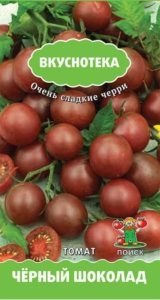Cherry tomatoes: the best varieties, their descriptions and characteristics
Among the many varieties and varieties of tomatoes, their small-fruited relatives - cherry tomatoes - stand out. It will not be seditious to say that although cherry trees are not some great achievement of breeders, their popularity is steadily going uphill by leaps and bounds. While not much different from other tomatoes, they are still incredibly attractive in both size and taste.
Well, below you will be presented with a list of the most popular and best varieties of cherry tomatoes.
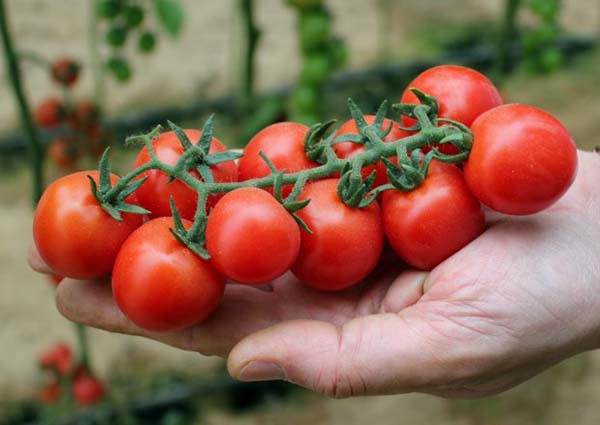
Content
Features and benefits of growing cherry tomatoes
This variety of tomato gets its name, you guessed it, because of its small shape, which looks like a cherry.
By the way! Cherry includes those varieties of tomatoes, the mass of which ranges from 15-40 grams.
Thus, cherry tomatoes have the following benefits:
- Looks and looks beautiful on a bush.
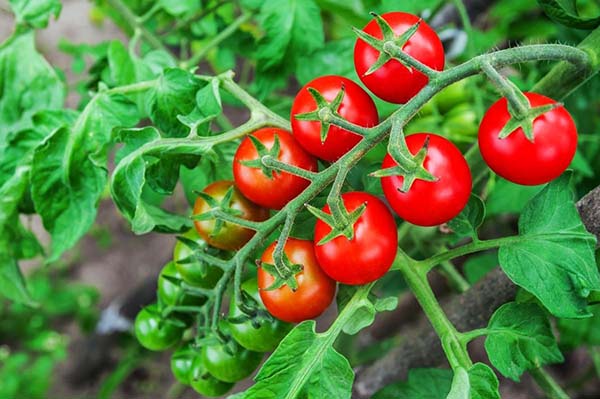
And not only on the bush, but also in the salad. Exactly cherry blossoms are able to decorate any of your culinary delights.
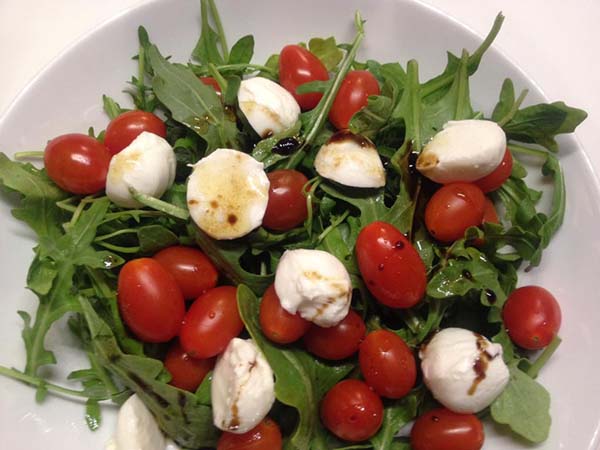
- Perfect fit for whole fruit canning.
- Many cherry varieties (especially undersized ones) are suitable for growing at home: on a windowsill or balcony.
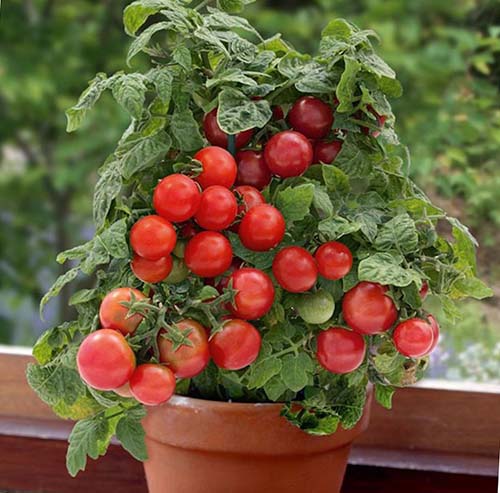
- Possess, as a rule, very sweetone might even say berry (dessert) taste.
- Good for the health (especially yellow, black and pink).
By the way! Cherry tomatoes can be of a wide variety of colors - red, pink, yellow (orange), black (brown, burgundy).
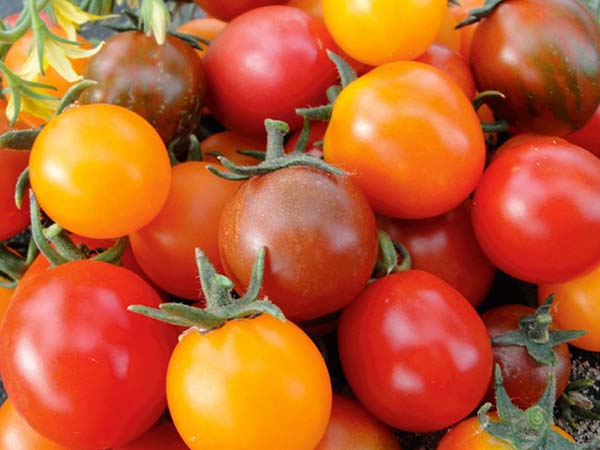
The only thing that cherry is inferior to their ordinary (larger-fruited) brethren are in yield, which is often much lower. But this disadvantage is more than compensated by the amazing taste and external characteristics.
Concerning cultivation features, then there are none as such - cherry tomatoes require almost the same care as ordinary tomatoes.
However, in order to get a decent harvest, and all the tomatoes on the brushes have matured, you need them form in time - cut and pinch the bushes (the most important thing is to cut off the leaves).
By the way! For more information on how to properly grow cherry tomatoes, see the next video. In it, the author tells in detail and clearly shows how to cut the leaves of cherry tomatoes in order to get the maximum yield:
Video: how to grow cherry tomatoes - the secrets of cultivation
Next, consider the descriptions and characteristics of the most popular varieties of cherry tomatoes.
Important! As for the place of cultivation, indeterminate tomatoes are more suitable for a greenhouse, determinant ones for open ground. But keep in mind that in a closed ground (greenhouse) you will in any case get a much more abundant crop, although low-growing (dwarf) cherry varieties can be grown in ordinary greenhouses.
The best varieties of cherry tomatoes: top 25 most popular
Note! The list of the best cherry tomatoes was prepared based on the degree of popularity of the names of varieties and hybrids, an analysis of the reviews of experienced gardeners, as well as the personal opinion of the author.
The most popular and best varieties of cherry tomatoes are (alphabetically):
By the way! The most common cherry varieties are the following (in terms of popularity): Balcony Miracle, Little Red Riding Hood and Chio-chio-san - three major hits. Further in popularity are Honey Drop, Pinocchio, Cherry red and yellow, Vera, Ira, Rose, Porpora, Geranium Kiss (Geranium kiss), Cranberries in sugar, Paints, etc.
Balcony miracle
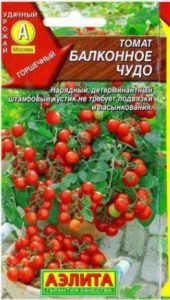
- Early ripening variety. Begins to bear fruit 100 days after germination (according to other sources, after 90).
- The plant is determinate, standard, 30-40 cm high. No garter or pinching is required.
- For growing outdoors, as well as on a windowsill or balcony.
- The fruits are round, smooth, red. They look like cherries.
- Weight - about 15 grams (according to other sources - 20-30 grams).
- Productivity - 4-5 kg per square meter (according to other sources - 3.5-4.5 kg).
- Excellent sweet taste and aroma. For fresh consumption and canning.
- Resistant to late blight.
By the way!There is a similar variety with lemon yellow fruits.
Blosem F1
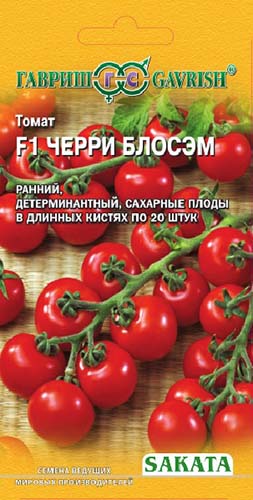
- Early hybrid (90-100 days from germination to harvest).
- The plant is determinant (with limited growth), hybrid. Long clusters of 20 fruits.
- For outdoor cultivation with stakes tie.
- The fruits are round, beautiful, red, glossy. The number of nests is 2.
- Weight - 20-25 grams.
- Productivity - 2.5-3.0 kg per sq.m.
- Sugar fruits (sweet).
- Cherry tomatoes are very fond of children; they are a wonderful decoration for festive tables, everyday meals and canned assorted assortments.
- Resistant to the main diseases of tomatoes: nematode, verticillosis and fusarium.
Bonsai
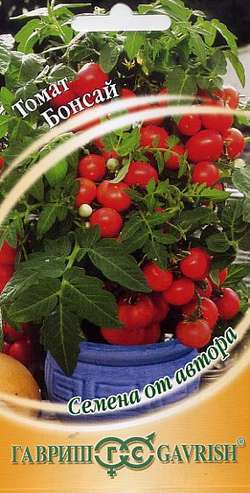
- Ultra early ripening variety (85-90 days from germination to fruiting).
- The plant is determinate, standard, dwarf (20-30 cm). No garter or pinning required. The first inflorescence is laid above the 5-6th leaf, then through 1 leaf (or even without separation by the leaf).
- Recommended for growing on balconies, windowsills, hanging flowerpots. Plants are planted in flower pots with a soil volume of 1.5-2.0 liters.
- The fruits are round, red. The number of nests is 2.
- Weight - 20-25 g.
- Productivity - up to 0.5-1 kg per plant.
- High taste.
Faith F1
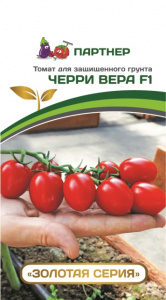
- Super early hybrid. From germination to the first harvest of fruits about 90 days.
- The plant is indeterminate, powerful, characterized by rapid growth in height, compact arrangement of leaves, due to which it is easily formed. The first inflorescence is formed after the 9th node, the subsequent ones - after 2-3 nodes. Fruit clusters are simple, with 15-20 fruits arranged compactly.
- Fruits of fantastically beautiful obovate shape, with a tiny "nose" or with a certain stretch, deep red color, without a green spot at the stalk.
- Weight -30 g.
- Productivity - up to 15-18 kg per sq.m.
- Sweet, fragrant, thick-walled and delicious, both fresh and canned.
- Resistant to fusarium, verticillium, rootworm nematodes.
Cherry black
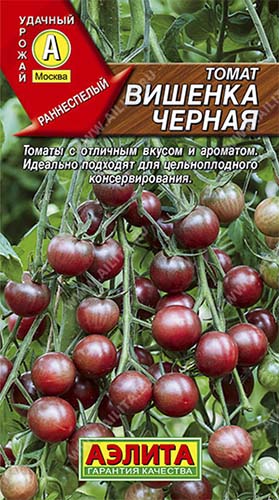
- Early ripe variety, 112 days from germination to fruiting (according to other sources, 100-105 days).
- The plant is indeterminate (with unlimited growth), more than 2 m in height. It is formed into one stem, removing all the “stepchildren”. When the 5th inflorescence is formed, the lower leaves are removed 2-3 times a week. After the formation of 8-10 brushes, the shoot is pinched, leaving 2 leaves above the last brush.
- For growing in film greenhouses.
- Fruits are round, brown in color (violet-brown). The number of nests is 2-3.
- Weight - 18-20 grams.
- Excellent dessert taste, cherry is very sweet and juicy, with a bright, pleasant aroma.
- For the preparation of fresh salads, mouth-watering snacks and colorful canned platter.
- Productivity - 3.5 kg per square meter (according to other sources, 6.5-7 kg).
Cherry yellow
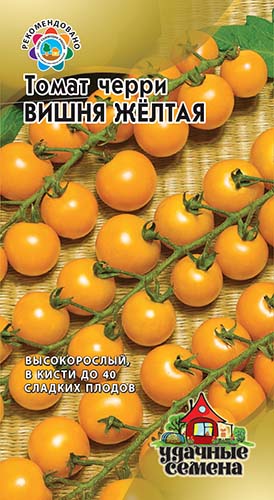
- Early ripe variety (92-96 days from germination to fruiting).
- The plant is indeterminate, semi-spreading, medium branched, medium leafy, more than 2 meters high. Form into one stem, removing all "stepsons". The first inflorescence is laid above 8-9 leaves, the next ones - after 3 leaves. A long brush with 20-40 fruits gives a special decorative effect to the plants.
- For cultivation in film greenhouses and open field (with a tie to the stakes).
- Fruits are round, smooth, yellow in color.
- Weight - 15-20 g.
- Productivity - 1.0-2.0 kg per plant.
- Excellent sweet taste.
- Multipurpose: for fresh consumption, also brushes canning.
- Susceptible to TMV and Fusarium, highly susceptible to cladosporium.
Cherry red
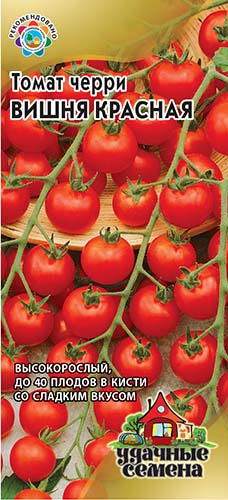
- Early ripening variety (95-100 days from germination to fruiting).
- The plant is indeterminate, semi-spreading, medium-branched, medium-leafy, tall (more than 200 cm). After planting, the plant is formed into one stem, removing all the "stepchildren". The first inflorescence is laid above 8-9 leaves, the next ones - after 3 leaves. A long brush with 20-40 fruits gives a special decorative effect to the plants.
- For cultivation in film greenhouses and open field (with a tie to the stakes).
- Fruits are round, bright red in color. The number of sockets is 2-3.
- Weight - 15-20 g.
- Productivity - 1.0-2.0 kg per plant.
- Excellent sweet taste.
- Susceptible to TMV and Fusarium, highly susceptible to cladosporium.
Ira F1
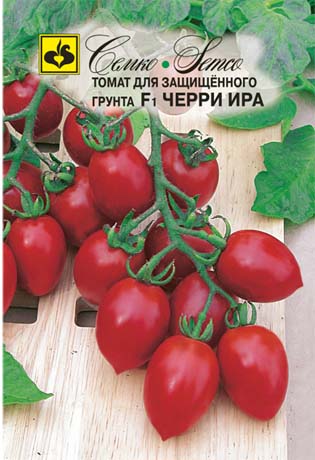
- An early ripe hybrid. From sunrise to ripening of the first fruits 90-95 days.
- The plant is indeterminate. There are up to 35 fruits in a bunch; harvesting is done with brushes or separate fruits.
- Recommended for growing in greenhouses, it is possible to grow outdoors on a trellis.
- Fruits are ovoid, with a pointed apex, deep red,
- Weight - 30-35 grams.
- Productivity - up to 15 kg per square meter (according to other sources, up to 5.4 kg).
- The fruits are distinguished by their unique taste, both fresh and canned.
- Resistant to verticillium, fusarium and rootworm nematodes.
Cranberries in sugar
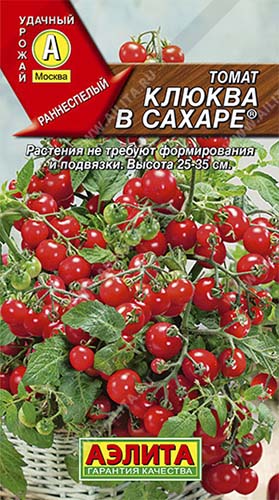
- Early maturing variety.
- The plant is determinate, standard, 25-35 centimeters high, does not require formation and garter.
- For growing in open ground, film greenhouses and indoor conditions (on a windowsill or balcony).
- Fruits are small, round, sweet, dark red. The number of nests is 2-3.
- Weight - 15 grams.
- Productivity - 2.3-2.8 kg per sq.m.
- The fruits are tasty, juicy, sweet, ideal for salads and whole-fruit canning.
- Resistant to late blight and adverse weather conditions.
F1 paints
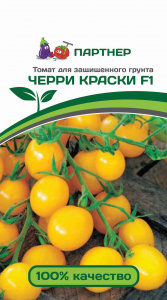
- An early ripe hybrid. From germination to the beginning of ripening 95 days.
- The plant is indeterminate. The first inflorescence forms above the 9th leaf, forming about 20 or more fruits per cluster, depending on the structure - simple or complex.
- Fruits are rounded, two-chambered, in biological ripeness, rich yellow, without a spot at the stalk.
- Weight - 20-25 g.
- Productivity - 3 kg per plant.
- Excellent taste, with uniform pulp density.
- Resistant to tomato mosaic virus, fusarium, cladosporium and verticilliosis.
Little Red Riding Hood
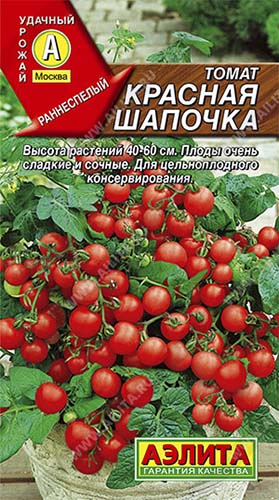 Early maturing variety. From germination to the beginning of fruiting 85-90 days.
Early maturing variety. From germination to the beginning of fruiting 85-90 days.- The plant is determinate, standard, 40-60 cm high. Does not require formation.
- Recommended for open ground, plastic greenhouses, balconies and window sills.
- The fruit is round, smooth, red. The number of nests is 2-3.
- Productivity - 2-3 kg per sq. meters.
- Weight - 15-20 grams.
- The taste is excellent, sweet, juicy. Suitable for salads and whole fruit canning.
- Resistant to verticillium, fusarium wilting, tobacco mosaic virus.
Lyuba F1
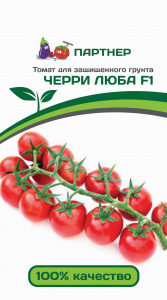
- An early ripe hybrid. From germination to the beginning of ripening about 95 days.
- The plant is indeterminate. The first brush is formed over the 9th leaf. 15-20 fruits are formed on one brush,
- Fruits are round in shape, densely red in color,
- Weight - about 30 g.
- Productivity - 12-15 kg per sq.m.
- The fruits have excellent gustatory qualities, retain good presentation and taste for a long time. Recommended for fresh and canned consumption.
- Resistant to tomato mosaic virus and a complex of tomato diseases.
Honey drop
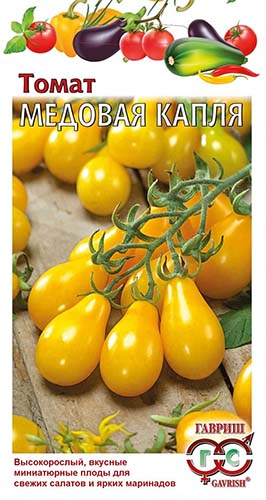
- Medium early variety (from germination to fruiting 100-110 days).
- The plant is indeterminate, tall, taller than 2 meters. Garter and shaping are required.
- For growing in open ground and film greenhouses.
- Fruits are teardrop-shaped, smooth, honey-colored.
- Weight - up to 30 g (on average 10-15 grams).
- Productivity - up to 5 kg per sq. m.
- Pleasant sweetish taste with delicate tomato aroma.
- Universal use: for the preparation of mouth-watering and bright fresh salads, pickles, marinades, delicious snacks and canapes.
Honey F1
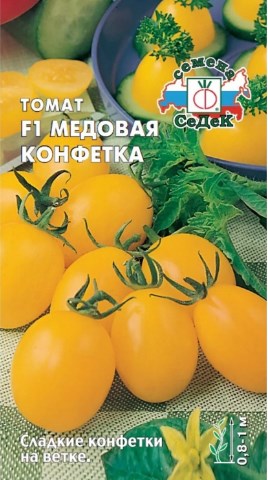
- Early ripe hybrid (100-105 days).
- The plant is determinate, medium-sized, up to 1 meter high, slightly leafy. The first inflorescence is laid above 8-9 leaves, the next ones - after 1-2 leaves. On the main stem, 5-6 simple or intermediate clusters are formed, each consisting of 14-28 fruits.
- Fruits are oblong-oval, bright yellow. The number of nests is 2.
- Weight - 15-20 g.
- Productivity - 4-6 kg per sq.m.
- Fruits are dense, sweet, with a high content of solids and sugars. It is intended for fresh consumption, for drying and freezing, whole-fruit canning, both separately and as an assortment with red cherry tomatoes.
- Bears fruit abundantly, amicably and for a long time.
Pinocchio
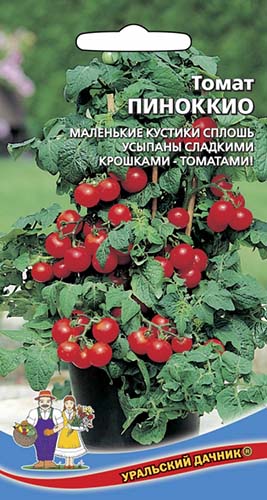
- Mid-season variety. 105-110 days from germination to fruiting.
- The plant is determinate, standard, compact, 20-35 cm high.
- Recommended for growing on a windowsill indoors, on a balcony or in the open field.
- The fruit is flat-round, smooth, red. The number of nests is 2-3.
- Weight - 15-20 g.
- Productivity - 1-1.5 kg per plant.
- Good or excellent taste. Universal purpose.
Porpora F1
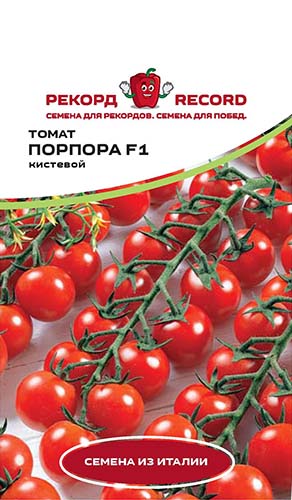
- Ultra early hybrid.
- The plant is indeterminate, compact, well leafy. 13-15 fruits are formed on the cyst.
- For greenhouses and open ground.
- The fruits are in the form of perfectly round balls of red-purple color.
- Weight - 25 grams.
- Resistant to temperature fluctuations, verticillium wilt, fusarium, tomato mosaic virus, nematode and tomato spotted wilt virus.
- The fruits are characterized by a high keeping quality.
Geranium Kiss (Geranium Kiss)
-
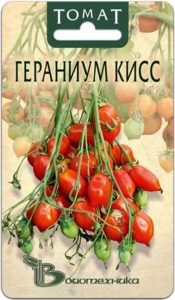 Early ripe variety, 90-95 days from germination to fruiting,
Early ripe variety, 90-95 days from germination to fruiting,- The plant is determinate, highly branched, rapidly developing. Has characteristic “potato” leaves. Brush complex, highly branched, consisting of 50-60 flowers. The brushes form huge beard bouquets with a mass of flowers blooming at the same time.
- Fruits are oval with a spout, dense, shiny, red in color.
- Weight - up to 30-35 g.
- Fruit of a dessert taste.
- Versatile: for fresh consumption, also great for canning whole fruits.
Button
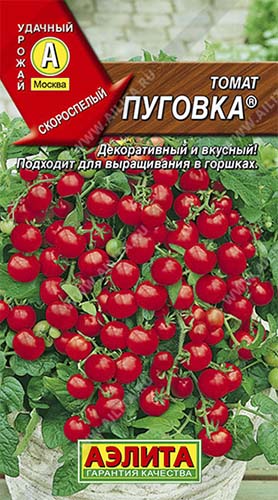
- Early ripening variety.
- The plant is determinate, standard, 50-60 cm high.
- For open ground and plastic greenhouses. Also suitable for growing in pots at home (on a balcony or windowsill).
- The fruit is round, smooth, red. The number of nests is 2-3.
- Weight - 10-15 grams.
- Productivity - 4.0-4.5 kg per sq.m.
- Very sweet and aromatic, with excellent taste.
- Ideal for home cooking, preparing and decorating salads, baby food, diet food, and whole-fruit canning.
- Resistant to verticillosis, fusarium wilt.
Rose F1

- An early ripe hybrid. From germination to ripening - 90-95 days.
- The plant is determinate, compact, slightly leafy. The first inflorescence is laid over 4–5 leaves, the next through 1–2 leaves. 8–12 fruits are formed in the bunch; harvesting is done by brushes or individual fruits.
- Fruits are round in shape with a "nose", intense pink-raspberry color. The number of nests is 2.
- Weight - 30–35 grams.
- Productivity - 10-12 kg per square meter (in a greenhouse), 7–8 kg per sq.m. (in the open field).
- High taste.
- Stress-resistant... Resistant to tomato mosaic virus, verticillary wilting, fusarium wilting, apical fruit rot, cladosporium, late blight.
Date yellow
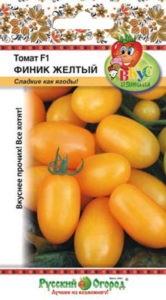
- Medium late grade.
- The plant is semi-determinate, 90-150 cm high, low-leafed, clusters contain 6-8 fruits.
- For growing in greenhouses and greenhouses, as well as in the open field (in the south).
- Fruits are elongated, oval, with a pointed tip, yellow.
- Weight - 20 grams.
- The fruits are similar in shape and sweetness to dates. The pulp is firm and sugary.
- Universal use: for salads and canning.
Date red
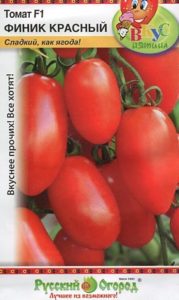
- Medium late grade.
- The plant is semi-determinate, 90-150 cm high, low-leafed, clusters contain 6-8 fruits.
- For growing in greenhouses and greenhouses, as well as in the open field (in the south).
- The fruits are elongated, oval, with a pointed tip, red.
- Weight - 20 grams.
- The fruits are similar in shape and sweetness to dates. The pulp is firm and sugary.
- Universal use: for salads and canning.
Black bunch F1
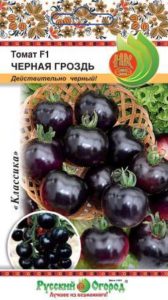
- An early ripe hybrid.
- The plant is indeterminate, about 1.5 meters high.
- For open and closed ground.
- The fruits are plum-shaped, with a rich dark (black, blue) peel.
- Weight - 35-70 g (average - 45 grams).
- The fruits have a pleasant aroma and a plum aftertaste (fruit-plum flavor).
Note! The pigment appears in the skin under the influence of sunlight already at an early stage of maturation. With insufficient sunlight (in greenhouse conditions), the surface of the fruit is less saturated with black.
Dark chocolate
- Mid-season variety
- The plant is indeterminate, tall, requires shaping and a garter. There are 10-12 pieces per brush.
- For film greenhouses.
- Cherry fruits are round, uniformly brown in color with a green spot at the stalk. The number of nests is 2.
- Weight - 20-28 g.
- Productivity - 4.7 kg per sq.m.
- Sweet, with a fruity cherry flavor.
- Salad purpose: for fresh consumption.
Chio-chio-san
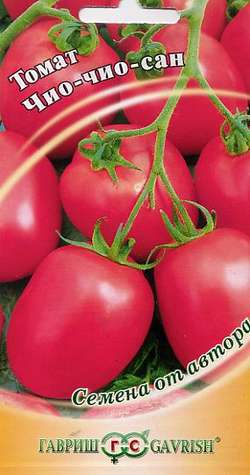
- Mid-season variety (110-120 days from germination to fruiting).
- The plant is indeterminate (with unlimited growth), medium-sized, medium-branched, medium-leafy. The first inflorescence is laid over the 9th leaf, the subsequent ones - after 3 leaves. On a huge branched brush, 50 or more fruits are formed.
- For film greenhouses and open ground with a tie to the stakes.
- Fruits are plum-shaped (ovoid), pink.
- Weight - 30-40 g.
- Productivity - 4.0 kg per plant (or 7.8 kg m2).
- The fruits have an excellent dessert taste.
- Recommended for making salads and canning whole fruits.
- Resistant to tobacco mosaic virus.
F1 chocolate
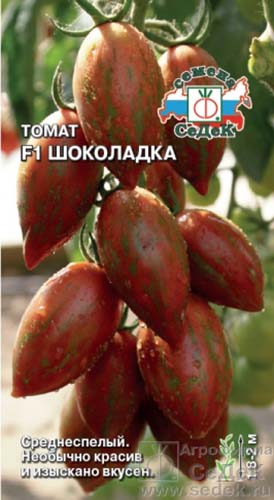
- Mid-season hybrid (115-120 days).
- The plant is indeterminate, 1.8-2 m high, requires a garter and formation. Clusters are simple, long, containing 9-11 fruits.
- For open ground and film shelters.
- Fruits are elongated plum-shaped, brown with dark green stripes.
- Weight - 30-40 g
- Productivity - 6-6.2 kg per sq.m.
- The fruits are juicy and sweet, with an exquisite taste.
- Recommended for fresh consumption and all types of culinary processing.
- Resistant to major diseases and temperature fluctuations.
Other varieties of cherry tomatoes
Naturally, now on the market you can find a huge amount, albeit slightly less well-known, but quite reliable and proven varieties of cherry tomatoes, let's name just a few of them:
- Abrek;
- Pineapple;
- Barberry;
- Bunch of grapes;
- The cherry is pink;
- Magic cascade;
- Curiosity;
- Kira;
- Kish Mish;
- Strawberry;
- Red scattering;
- Lycopa;
- Basket on the window;
- Rowan beads;
- Plum drop;
- Focus;
- Terek;
- Unique;
- Date orange;
- Florida Petite ("tastes so-so, too common");
- Cherry from Yuri;
- Mischievous.
Video: an overview of cherry hybrids from the Semko company
Perhaps, cherry tomatoes are more than worthy for every gardener to have 5-10 bushes in his personal plot. After all, most cherry varieties are quite unpretentious in care and are quite resistant to the main diseases of tomatoes. And what can we say about their taste and benefits ... Try it yourself, and not store-bought, but grown with your own hands. Fortunately, you are now familiar with the variety of their varieties and hybrids.
Video: cherry tomatoes - the best varieties and their features


